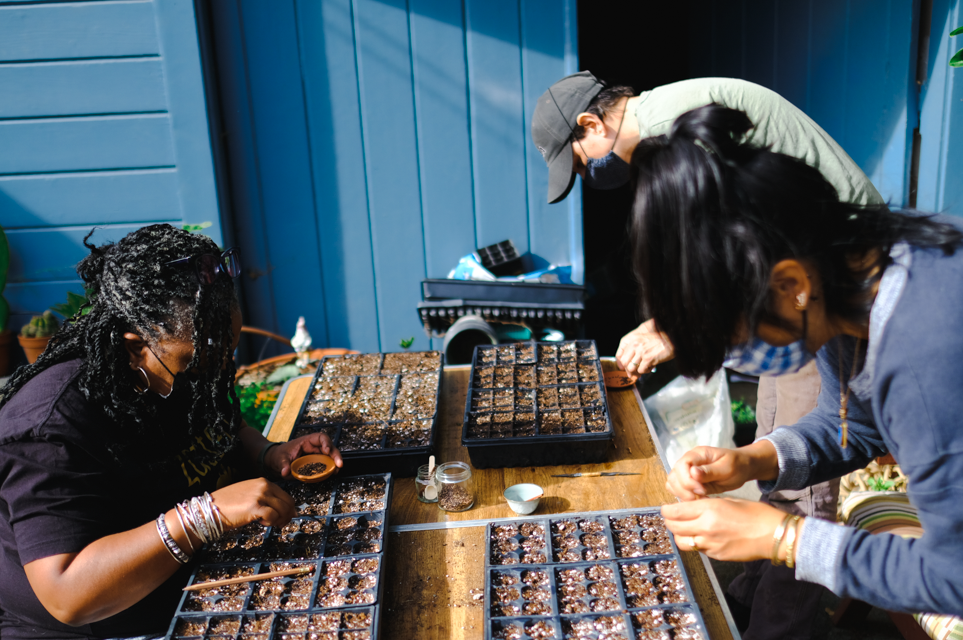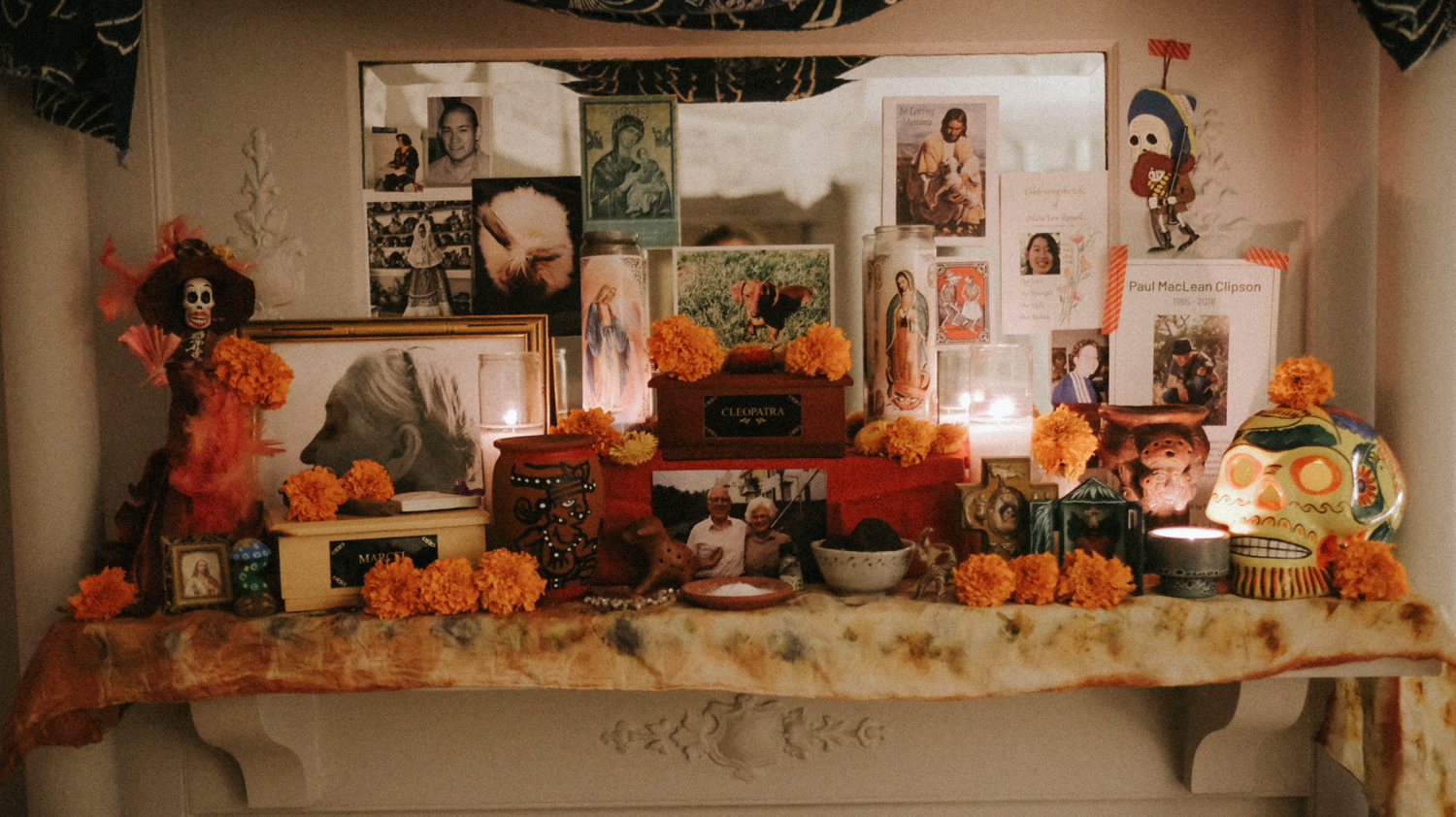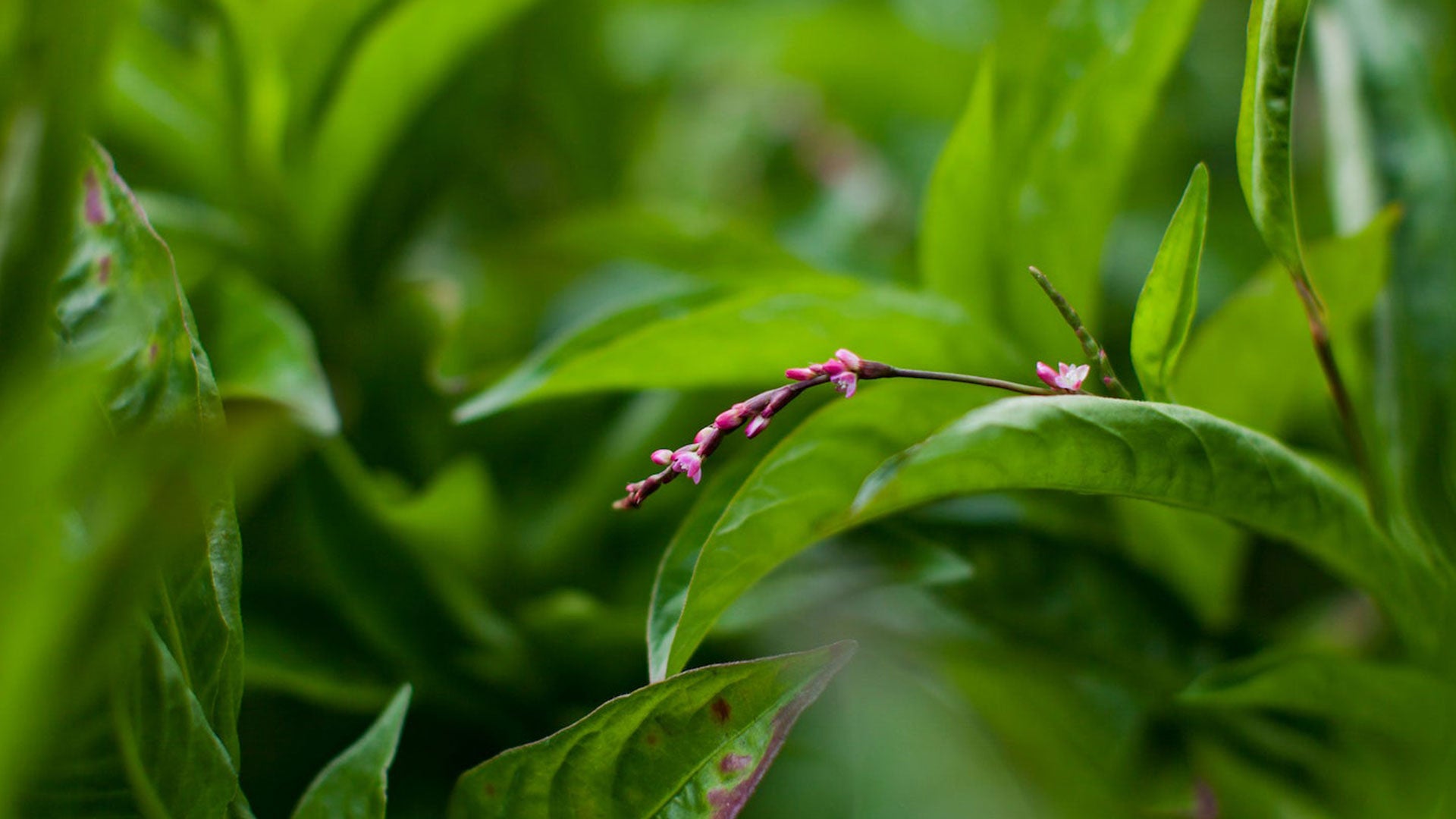








As we say goodbye to Summer, and ease into Fall, it seems that a cycle has been completed, so Adrienne and I thought we would give a garden update.
Five years ago, Adrienne and I removed the juniper in our front yard to make the most of the only space in our tiny yard that has full sun. We had begun to research and experiment with the type of indigo-dyeing practiced at BUAISOU, where one grows their own indigo-bearing plants (Persicaria tinctoria), composts the leaves, and then ferments the leaves to create a dyebath. Typically, the minimum amount of dried leaves composted is 300 pounds (requiring 2000 pounds of fresh plants) - which I am sure as you can imagine is quite resource and labor intensive. So we embarked on experimenting with ways to use this sunny patch of Earth (only 100 square feet) to replicate the process on a much smaller scale making it more accessible to the home dyer. And indeed we did crack the code, and now a recipe using 40 pounds of dry leaves to create 2 ten gallon fermentation vats is published in Journeys in Natural Dyeing, freeing us and our tiny farm to grow vegetables!
Adrienne and I are very interested in companion planting - and all symbiotic relationships. We started 2021, as we have done in prior years, where on January 1st, we clear out any old roots, prepare the furrows, plant fava beans. P. tinctoria and all indigo-bearing plants thrive on nitrogen. Fava beans, as well as other legumes, help to add nitrogen to the soil. We harvest the young fava leaves to eat as the plants grow. Once the plants reach 3-4 feet tall, we harvest them, cut them into pieces, and the sun dries them, so that they can be used as green manure. Once dry, we combine the fava plants with the soil. Meanwhile in the house, we start the P. tinctoria seeds.
We decided to grow a Three Sisters Garden; the pinnacle of companion style growing of vegetables practiced by indigenous communities in the US, Mexico, Central and South America. The three sisters are corn, winter squash, and climbing beans. The corn grows tall, providing a trellis for the climbing beans. The beans add nitrogen to the soil benefitting the corn and squash. The leaves of the squash plant cover the ground, helping to keep weeds at bay.
Our climate here in Oakland provides a unique challenge; the fog rolls in nearly every night and the temperature can drop as much as 15 degrees. With those changes in temperature, we can experience downy mildew and larger heat-loving vegetables can struggle to ripen. So we steer clear of large heirloom tomatoes, and we hone in on cherry tomatoes. (This is also why we grow P. tinctoria and not indigofera or the other legume-based indigo-bearing plants.)
So when it came to choosing our corn, squash, and beans, we selected varieties that are said to thrive, um, maybe more like withstand, our climate. This included Glass Gem, Painted Hill, and Oaxacan Green Corn, Scarlet Runner beans, and Sweetmeat and Kabocha squash. We also planted two tomatillo plants and two hot pepper plants.
Last year, when everything was closed down, it became easier to park in our neighborhood, and dying to see scenery beyond the 4 walls of our house, we turned our driveway into a hangout zone. While walking last Summer, we stumbled across an 80s outdoor lounge set (with cushions, yes, most likely the one you just imagined). We went home and got our 1989 Toyota truck (Lil' Red) and picked up this incredible find. This year, not knowing where we would be with the vaccine, we planned our garden so that it was oriented towards the lounge, similar to a TV facing a couch. Except our TV has been the garden (heart emoji!). Marigolds framed the front of the garden, a wonderful companion plant that keeps bugs at bay, attracts pollinators, and an amazing dye plant. We planted the P. tinctoria with the help of our friends Shiree, Yuko, and Sarah, in semi-circles hugging the centrally-located Three Sisters.
All Summer our family was bombarded with daily photos of new garden discoveries - a new bloom or fruit or leaf. Look at the pink tassels of the corn! Taking turns unwrapping a cob of corn, revealing the most exquisite, divine, uneven rows of blue-green kernels. A ladybug - hundreds of them actually - busily climbing across leaves and nibbling on the dreadful aphids. Butterflies. Oh look - the bean tendril is hugging the cob of corn (and yes, that cob was the last one to be harvested, not wanting to disturb the embrace). The color turquoise created from the leaves of fresh P. tinctoria leaves never ceases to amaze. Our garden became our constant, guiding companion.
With our gains, came losses. Our first, one and only, squash that was so promising, large, round, and perfect - seemingly out of nowhere, a small indent, similar looking to if someone gently pressed their fingernail into the skin, turned into a hole. We kept the squash on the vine to watch and learn. And just yesterday, the vine withered and released the squash. We sliced it open to try and see what happened. Without answers, we said goodbye and composted it. We do have another small one on the vine, though will it ripen in time as the temperatures begin to fall? A similar story with our beans, we had lots of flowers, but few beans. Though the ones we do have are cherished, bright pink and purple, we wonder if these are actually the original inspiration for jelly beans. And there were challenges with extracting indigo (more on that to come).
I feel so uncomfortably tender. If it were up to Adrienne and I to feed ourselves from our garden, we would famish. This experience reminded me to take care and note the skill and hard work to grow a humble squash or pod of beans. Though I don't have to literally walk in another's shoes to have empathy and compassion for them, every time I practice experiential learning, it brings forth immense gratitude - in this case, thanks and recognition for those who raise our food, many of whom are undocumented and of Latinx heritage. We allow this emotion and gratitude to guide us into action - to supporting via voting pathways to citizenship, fair pay, and labor protections.
We really wanted to squeeze in one more virtual dyeing session in our garden, but the team here have been tending to family stuff, and the P. tinctoria has its own ideas - it's been flowering! Moving into the next stage of its life. Every night, I was plucking the flowers off, trying to guide the energy back into the leaves, where the indigo resides. And every morning, new flowers emerged. Finally, I received the message, it is time to transition into the next phase, Autumn.
As we gently close the door to Summer, we embrace this new phase, when the P. tinctoria will create seeds for next year's crop and its dried leaves will be removed from their stems to be composted. The corn dried from the strong Summer-sun's rays will be nixtamalized and turned into masa to make tamales and tortillas. We will purchase a winter squash to roast and share. And we will begin to plan next year's garden as well as virtual and maybe even live workshops.
Happy Autumn,
Kristine and Adrienne



